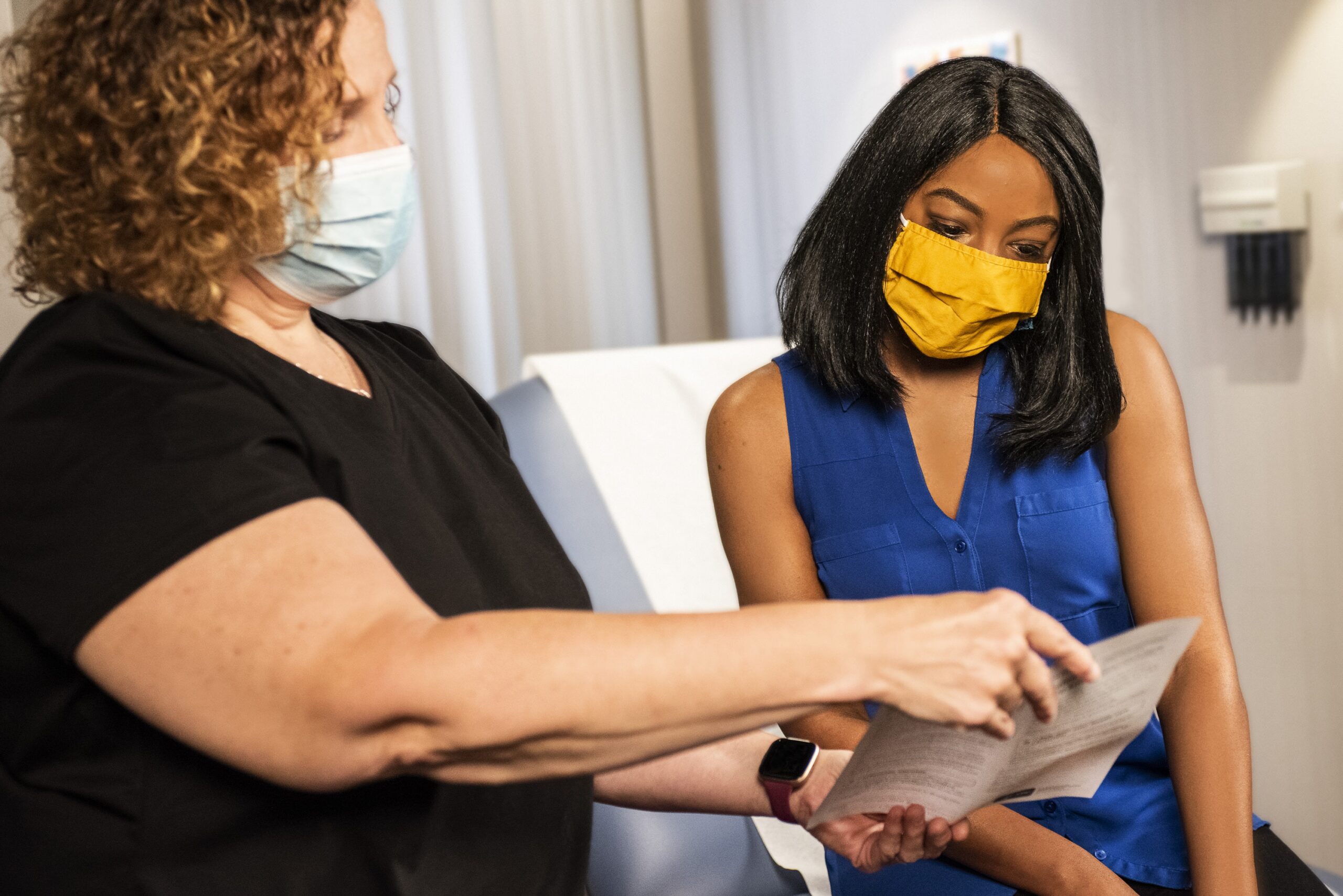Breast cancer patient recruitment for clinical trials
Need help accelerating your study?
Breast cancer is increasingly recognized as a public health concern, yet only 5% of patients with breast cancer take part in clinical trials – we know how to close that gap
Some 44% of Europeans said in a major survey that they would like to participate in clinical trials. Yet only 5% of breast cancer patients actually do so. Our patient-centered recruitment approach to breast cancer trials corrects this discrepancy – improving patient recruitment and helping to drive much-needed treatments for breast cancer.
At Clariness, we have successfully supported 15+ breast cancer treatment trials in recent years. Leverage our knowledge and experience in targeting diverse national and local patient populations to improve recruitment for even the most selective and specific of breast cancer trials.

Reach specific breast cancer patients across different communities
Our data-driven digital outreach campaigns for breast cancer studies focus on reaching specific groups of patients that are most likely to qualify and less likely to drop out from a study once enrolled. We build patient profiles for the recruitment campaigns, based on recent academic research and pay extra attention to questions regarding ethnicity and socioeconomic background.
As breast cancer studies, in general, have become more complex, due to research highlighting the specificities of different variants, finding participants has become an increasingly difficult and costly effort.
More so, in recent years there has also been an increase in the numbers and types of immunotherapies and targeted therapies available in breast cancer research, with each of these studies needing specific groups of participants. This leads to higher competition when finding the right patients for your study.

Find patients aligned to your protocol
Our Chief Medical Officer reviews your protocol and aligns with our patient recruitment team’s objectives and tactics to ensure the patients referred to your research center fit the requirements of your study.
Recent studies have highlighted that women with advanced breast cancer are more likely to enter clinical trials when informed properly and openly about possibilities of treatment and their disease prospects. Specifically, women who are already undergoing CAM therapies are indicated to be more open to participation in clinical trials.
Another aspect is that women who decline participation often explain that they are not interested in research or don’t see the benefits. Only a very small percentage of women who refuse to participate do this on the basis of being too sick.
Patient-centric content that informs patients about the possibilities, as well as how much time and effort participating takes, helps increase participation rates.

Addressing patient diversity in breast cancer clinical trials
Minority groups are underrepresented in breast cancer clinical trials – despite the fact that mortality rates are much higher for people in these communities. While white women from higher socioeconomic backgrounds are more likely to get breast cancer, the mortality rate for black women is 40% higher. Black women are also 50% more likely to be diagnosed with triple-negative breast cancer.
Recruitment for breast cancer trials is often limited by challenges of minority recruitment, especially as health authorities are increasingly demanding for representative study populations. Barriers to participation vary from country to country and community to community. It is, therefore, crucial to have in-depth knowledge of local populations in order to address them in the right language and tone to reduce distrust and specific concerns.
Researchers note that for many Asian and African American communities, it is especially important to take into account the family when reaching out to patients. Although trial recruitment often involves consent only from the patient, the decision-making process typically involves the whole family (and in some cases, the wider community), so providing information has to be extended as well.
Informed by Patient Insights, our patient recruitment and retention services allow us to reach a more diverse patient population. We use digital tools and multiple communication channels to reduce physical barriers to site access, create patient-friendly study materials to increase health literacy, and tailor strategies to local communities and cultures.
By understanding patient needs, we can overcome the unique barriers these patients face when joining clinical trials.
.

Leveraging decentralized solutions in your breast cancer studies
Embracing new decentralized clinical trial (DCT) solutions can help your clinical trial stay on track and reduce patient drop-out. For oncology trials, in particular, patients experience a high burden due to receiving treatments on-site and the number of study visits required throughout a trial. However, during the pandemic, regulators allowed clinical trials to adjust processes to reduce infection risk. This included leveraging telemedicine, using alternative study locations, remote data collection methods, and home-based delivery of certain investigational medications.
We can help you adopt new approaches and transform your trial by navigating regulatory changes, creating study materials for patients and caregivers to better understand new technologies, and providing intensified support to sites to reduce site burden.
Our experience with hybrid and DCTs can be applied directly to your study.
Our digital targeting techniques
We have four ways of reaching patients with breast cancer.
Location and capacity targeting
Patients living within a predesignated radius around active sites are targeted with ads that are activated and deactivated based on site referral volume.
The incidence of breast cancer varies greatly from region to region. For example, while breast cancer is predominantly diagnosed in white women in the U.S., the incidence in some U.S. states (and local regions) is significantly higher in African American women (e.g., in Kentucky, Louisiana, Mississippi, Alabama, and some other regions).
Since this is similar in Europe and other regions of the world, we have adapted our data-driven outreach to local conditions.
Interest-based targeting
Patients searching or engaging (e.g., likes, shares, comments, etc.) with breast cancer-related content are reached out to via digital marketing. We can use 40+ marketing channels (both digital and offline) to reach out to people with breast cancer and inform them and engage with them regarding your studies. For example, we share studies in social media groups for people with breast cancer or people searching for information through search engines.
Demographic targeting and pre-screener
Age, social media behavior and profile, and other demographic indicators are used as filters to find the patients (and their families) most likely to match your study and enroll.
According to recent studies, women with higher socioeconomic status are more likely to develop breast cancer but are also more likely to participate in screening. In contrast, while those from lower socioeconomic backgrounds and minorities have a lower incidence, they are also less likely to participate in screening or even know how to recognize early symptoms. For this reason, we target different groups depending on study needs.
Behavioral targeting
We send study notifications to our large database (>1.3 million registered ClinLife users worldwide) based on their location and indication details. By continuously analyzing the (anonymized) behavior of those successfully enrolled, we can understand and reach similar people.
Patients with breast cancer find our ClinLife patient portal via organic search, are informed through our patient-centric content and patient blog, and are asked to subscribe to our breast cancer newsletter. As soon as we publish new studies on ClinLife, we inform our registered users and thus increase enrollment rates.

